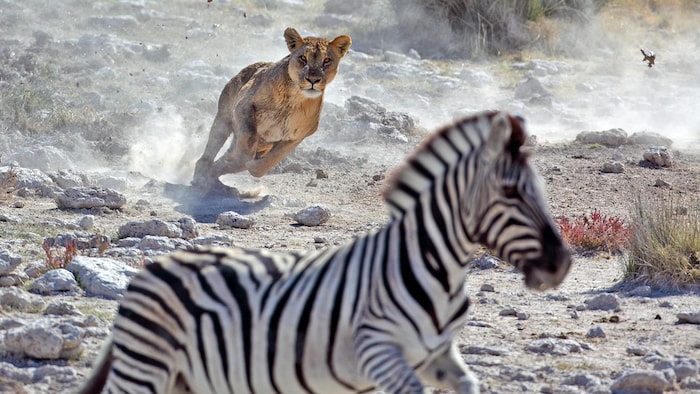Open in full screen mode Study shows that the arrival of big-headed ants led to a division by three deadly attacks by lions on zebras. Agence France-Presse After the snowball effect and the butterfly effect, could there be an ant effect? In any case, researchers have just shown how the invasion of an invasive species of formicids has disrupted the fragile ecosystem of the savannah and the eating habits of lions in Kenya. Often we find that the world is governed by very small things which can have devastating effects that we had not anticipated, underlines Todd Palmer, professor at the University of Florida, one of the authors of this study published Thursday in the journal Science(New window) (in English).
Lions observe the savannah at from an acacia.
It all began 15 years ago in the vast plains of Laikipia, Kenya. The place is covered by whistling acacias, a species of tree around which a harmonious balance has been created between the different species.
A local ant made its nest there, becoming in exchange the defender of this tree. Despite its thorns, the acacia would otherwise be devoured by local herbivores, notably elephants, who are repelled by the insect colony's pheromones and stings.
This beautiful collaboration was interrupted by the introduction, initiated by human activity, of the big-headed ant, which quickly chased the other ants from the acacia , making it vulnerable to pachyderms again.
Loading
Request for injunction: Northvolt can continue its work, decides the Superior Court
ELSEWHERE ON INFO: Request for injunction: Northvolt can continue its work, the Superior Court rules
At first, no one really noticed these ants, because they are not aggressive toward large creatures, including humans, Palmer notes.
We now see that they are transforming landscapes in very subtle ways, but with devastating effects.
A quote from Todd Palmer, professor at the University of Florida
Previous studies have shown that the arrival of this invasive species had led to five to seven times more damage caused by elephants on the region's acacias, decreasing by ;as much forest cover.
However, the latter was also an essential element in the hunting strategy of lions, which, thanks to the foliage of the trees, could create an effect of surprise, essential to capture their favorite prey, the zebras.
The study carried out over three years in Kenya's Ol Pejeta Conservancy, comparing areas invaded by big-headed ants and those where they were not, shows that the arrival of big-headed ants led to a division by three of the deadly attacks of lions on zebras.
But far from reducing the feline populations for lack of food, the latter On the contrary, they adapted by changing their prey to fall back on buffaloes. The latter require more effort from the lions, because they are more difficult to capture, but do not necessarily reduce their food ration.
In a sense, this is good news, because lion populations have remained stable, even after all the cascading effects that have occurred, Douglas Kamaru, lead author of the study, told AFP. ;study.
But the question is what happens in the future if another upheaval occurs, when the presence of lions more widely in the region has declined sharply, from 100,000 to 2000 individuals, and regime change food of the kings of the savannah could also cause a series of unsuspected consequences.
Moreover, even if nature is intelligent and if the lions have found a An effective adaptation strategy at the moment, big-headed ants could also cause problems for other species that depend on the whistling acacia, such as giraffes or the critically endangered black rhino. #x27;extinction, underlines the study.
Beyond the ants, these risks are proven. Last year, the Intergovernmental Scientific Advisory Group to the United Nations Convention on Biodiversity (IPBES) listed more than 37,000 so-called alien species that have taken root far from their place of origin. Among them, 3,500 are considered invasive, causing major damage to biodiversity.

